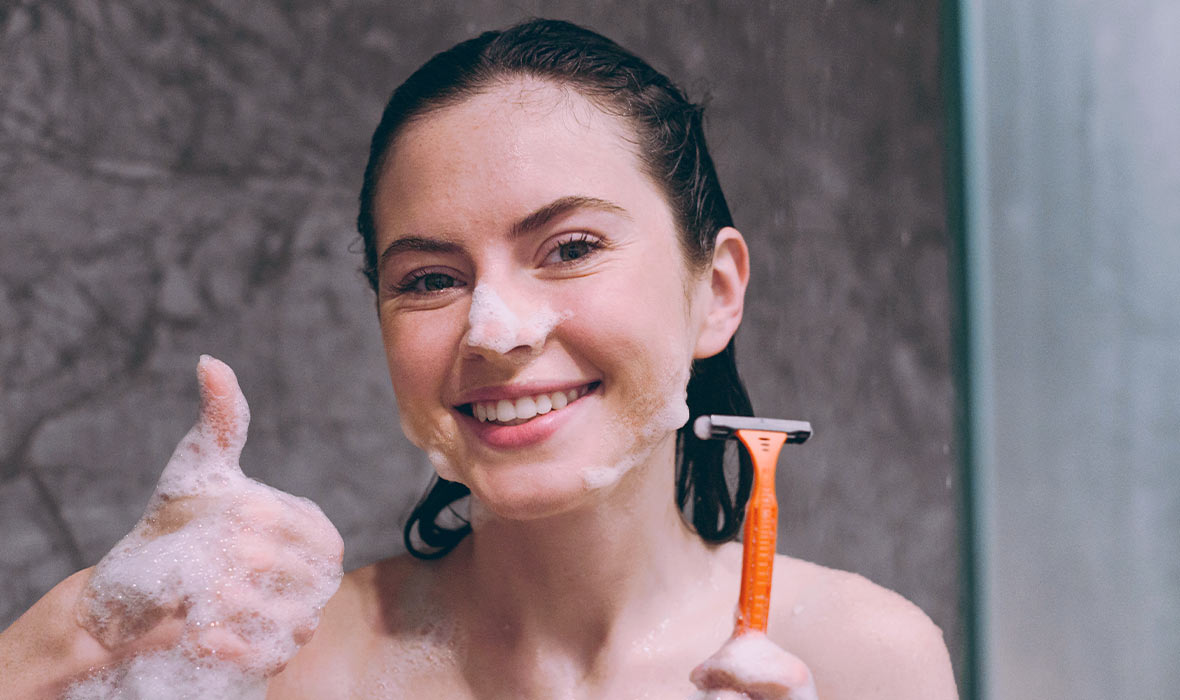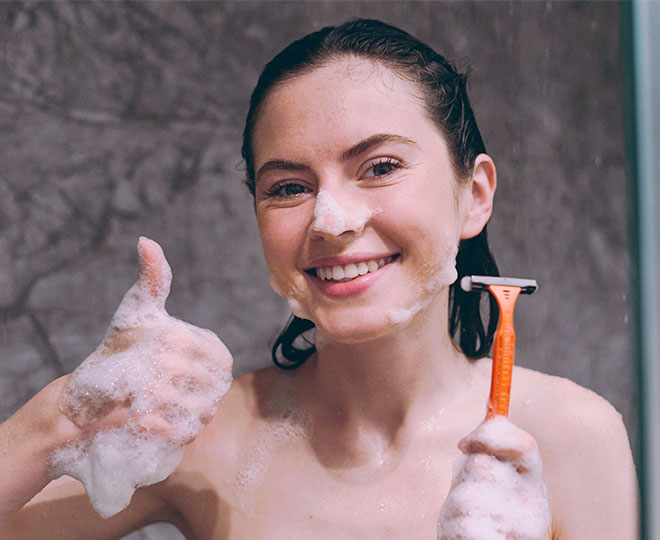When you’re in a time crunch, and want to trim down that noticeable stubble fast, shaving with acne ‒ even if it’s the large and noticeable kind ‒ may seem worth the risk.
However, before you reach for that razor, know that your chances for developing pimples after shaving only increases if you shave with acne. This doesn’t mean you can’t shave, but, instead, it’s important to be mindful of how you shave with acne.
To help you shave with acne, ahead we have some helpful tricks and tips on how to get the job done. Plus, we’re also providing insight into another skin condition you may be mistaking your post-shave zits for, just in case you can’t tell the difference.
Can you shave with acne?
Shaving with existing breakouts can be a bit tricky, because while it’s tempting to shave over your pimples in hopes that they’ll simply fall off, doing so sometimes causes more harm than good. To be more specific, shaving over acne can lead to scarring and it could also make your breakouts worse.
More on how to prep your skin before you shave below.
Before You Shave
If you have acne-prone skin, there are several things you can do before you shave to minimize your risk of irritation plus pimples after shaving.
For starters, moistening hairs beforehand softens them, and better prepares them for your shave. Next, consider the shaving cream you use. Believe it or not, some products can be irritating, making it best to stick with shaving creams that are designed for sensitive skin.
Equally worth paying attention to is your razor, as you’ll want to use a fresh and sharp blade each time you shave. This helps give you a close shave with less irritation.
As You Shave
To shave with acne, be sure to use your razor carefully, as preventing nicks and avoiding contact with your pimples should be your top priority. This means shaving lightly in the direction hair grows, without exerting too much pressure onto the skin with your blade.
As you shave, you’ll also want to make sure you rinse your blade after each swipe as irritation and bumps can occur if the blade is left unrinsed. And most importantly, never shave off pimples, no matter how tempting it may be. Doing so can make acne even worse, so it’s best to avoid contact with any pimples, as you glide your razor across the skin.
Post-Shaving
After you’ve finished shaving, ensure that your shaving cream is completely removed by using a gentle cleanser.
Finish with a moisturizing facial or body lotion to keep your skin supple and free of dryness.
Can Shaving Cause Acne?
Does shaving cause acne? No. However, it can lead to folliculitis (when hair follicles become inflamed,) which can look like a sudden acne breakout.
There are some differences between the two; Folliculitis tends to itch and be painful, while acne breakouts generally aren’t. However, if you aren’t sure if you have a case of folliculitis or acne on your hands, it’s best to consult with a dermatologist to receive an official diagnosis.
Conclusion
If you have acne and need to shave, you should definitely feel encouraged to do so, but it’s important to keep safety in mind.
To shave with acne, make sure you have a shaving cream for sensitive skin on hand. Using a razor with a fresh and sharp blade can also make a difference, as this can lower risk for developing irritation. And don’t forget to moisturize and nourish your skin, post shave, to help replenish moisture and keep your skin looking healthy.






